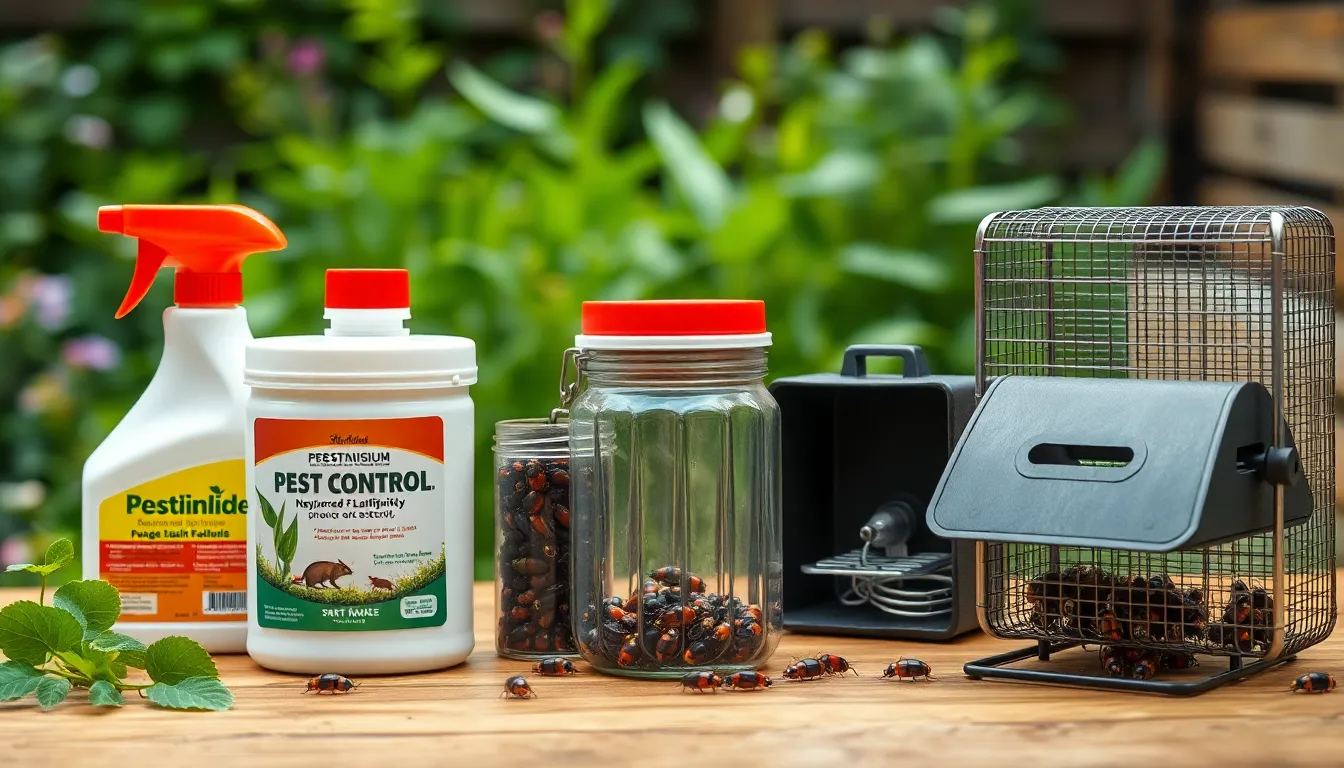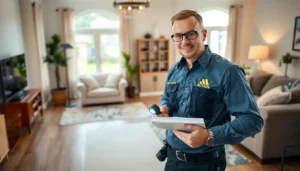Table of Contents
TogglePests can turn a cozy home into a chaotic battleground faster than you can say “squash the bug.” From tiny ants marching in formation to stealthy rodents plotting their next snack attack, these uninvited guests know how to crash a party. Thankfully, pest solutions are here to save the day and restore peace to your living space.
Overview of Pest Solutions
Pest solutions encompass a variety of methods designed to control and eliminate pest infestations. Approaches include both chemical and non-chemical options, allowing individuals to choose based on their preferences and the specific situation. Integrated pest management (IPM) emphasizes a long-term strategy, combining multiple techniques to reduce pest populations effectively.
Chemical solutions involve the application of pesticides and insecticides. These products can quickly address severe infestations. Examples of common chemical solutions include traps, baits, and sprays, each tailored for different pests. Non-chemical solutions, on the other hand, utilize natural products or physical barriers. Options like diatomaceous earth and essential oils offer alternative ways to deter pests.
Professional pest control services provide expert assistance in identifying and addressing pest problems. Trained technicians assess the extent of infestations and recommend appropriate actions. Their experience ensures that homeowners receive targeted solutions. Regular monitoring and preventative measures can greatly enhance pest management efforts.
Cultural practices also play a vital role in managing pests. Maintaining cleanliness, sealing entry points, and proper food storage reduce the likelihood of infestations. Gardening techniques, such as companion planting, can naturally deter pests while promoting healthy plant growth.
Ultimately, choosing the right pest solution depends on the type of pest, the severity of the infestation, and individual preferences. Combining multiple strategies can lead to long-lasting results and a pest-free environment.
Types of Pest Solutions

Various pest solutions exist, each catering to specific pest issues and preferences. Understanding these options can help individuals choose the most effective method for their needs.
Chemical Solutions
Chemical solutions include substances like pesticides and insecticides that target pests directly. These products often provide quick relief, effectively eliminating severe infestations. Many formulations exist, allowing for targeted applications to specific pest types, such as ants or roaches. Safety precautions must be taken when using these chemicals to protect humans and pets. Regulatory agencies ensure that these products meet safety standards for residential use.
Biological Solutions
Biological solutions utilize natural organisms to manage pests. Beneficial insects like ladybugs can control aphid populations, providing an eco-friendly alternative to chemicals. Microbial agents, such as nematodes, effectively target harmful pests in the soil. This approach reduces reliance on synthetic pesticides while promoting a balanced ecosystem. Plant extracts also show promise in deterring pests without harming beneficial species. Effectiveness varies, so combining biological methods with other strategies often yields the best results.
Mechanical Solutions
Mechanical solutions involve physical methods to remove or exclude pests from spaces. Traps for rodents and insects can capture pests without chemicals. Barriers like screens and caulking prevent entry points, reducing infestations from the start. Vacuuming is another effective way to remove pests and their eggs from homes. Many find these methods practical as they require no chemicals and promote immediate cleanliness. Regular inspections and maintenance enhance the effectiveness of mechanical solutions.
Effectiveness of Pest Solutions
Pest solutions play a crucial role in managing pest populations effectively. Understanding their impact, both short-term and long-term, is essential for homeowners.
Short-Term vs Long-Term Effects
Short-term effects of pest solutions often lead to immediate relief from infestations. Chemical treatments, for instance, can quickly eliminate insects and rodents, restoring comfort. Long-term effects are equally important, focusing on sustainable pest management. Integrated pest management emphasizes prevention and the use of non-chemical methods, reducing the likelihood of future infestations. Regular maintenance reinforces the long-term effectiveness of these strategies, ensuring ongoing protection against pests.
Environmental Impact
The environmental impact of pest solutions varies significantly among methods. Chemical solutions may pose risks to beneficial insects and surrounding ecosystems. Non-chemical alternatives, such as diatomaceous earth, often provide safer options without harmful consequences. Biological controls utilize natural predators that enhance ecological balance while managing pests. Choosing environmentally friendly methods promotes a healthier habitat and reduces chemical exposure for both humans and wildlife. Responsible selection of pest solutions can minimize harmful effects on the environment while effectively addressing pest issues.
Choosing the Right Pest Solution
Selecting the right pest solution requires consideration of various factors. Homeowners may prioritize safety, effectiveness, and environmental impact when deciding on the best method. Assessing the type of pest is essential, as different pests respond to specific treatments.
Chemical solutions offer rapid relief for severe infestations. They contain active ingredients that effectively target unwanted insects or rodents. Safety precautions like using protective gear and following instructions thoroughly enhance the safe application of these products.
Non-chemical methods, such as diatomaceous earth and essential oils, present natural alternatives. These solutions deter pests without introducing harmful chemicals into the environment. Incorporating these options into a pest management strategy can protect beneficial insects and support ecological balance.
Professional pest control services bring expertise to the table. Trained technicians can identify, assess, and address pest problems efficiently. Utilizing their knowledge often results in tailored solutions that meet the specific needs of a household.
Integrated Pest Management (IPM) combines chemical, biological, and mechanical tactics for sustainable pest control. IPM emphasizes prevention by integrating methods like regular inspections and proper sanitation practices. Homeowners can significantly reduce pest populations by maintaining cleanliness and proper food storage.
Evaluating the effectiveness of chosen solutions involves both short-term and long-term considerations. Instant relief from chemical treatments contrasts with the lasting effects of IPM strategies. Long-term goals should focus on sustainable practices that reduce future infestations while promoting safety and environmental health.
Prioritizing combination strategies enhances overall pest management success, leading to a pest-free living space.
Finding the right pest solution is crucial for maintaining a peaceful home environment. By understanding the various methods available homeowners can make informed decisions that suit their needs. Whether opting for chemical treatments for immediate relief or embracing natural alternatives for long-term sustainability each approach has its benefits.
Integrating multiple strategies through an IPM approach enhances effectiveness while prioritizing safety and environmental health. Regular inspections and proper sanitation practices further support pest management efforts. With the right knowledge and tools homeowners can successfully reclaim their space from unwanted pests and enjoy a comfortable living area once again.




